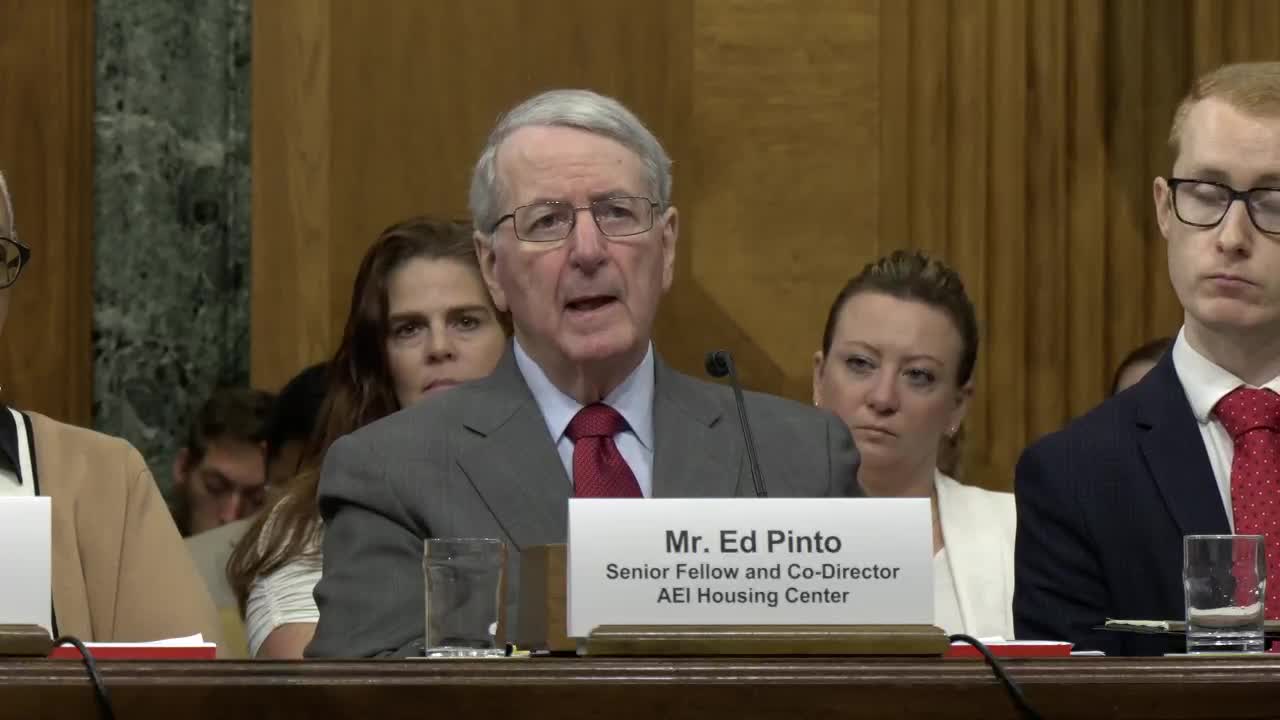Corruption fears rise amid housing subsidy debate
September 25, 2024 | Budget: Senate Committee, Standing Committees - House & Senate, Congressional Hearings Compilation
This article was created by AI summarizing key points discussed. AI makes mistakes, so for full details and context, please refer to the video of the full meeting. Please report any errors so we can fix them. Report an error »

In a recent government meeting, officials discussed the potential repercussions of loosening lending practices and the implications of increased subsidies for first-time homebuyers. Concerns were raised about the historical context of such measures, with references made to past corruption linked to federal housing programs, particularly the Federal Housing Administration (FHA) initiatives from the early 1970s.
One speaker highlighted the risks associated with rapidly increasing subsidies, warning that it could lead to disastrous outcomes similar to those seen in previous housing crises. The discussion emphasized the difficulty homebuilders may face in adapting to a market influenced by these changes, particularly if lending standards are relaxed concurrently.
The meeting also addressed the anticipated effects of down payment assistance programs, predicting a 3.6% increase in home prices in areas where first-time buyers would receive aid. Drawing on historical data from a 2015 FHA policy change that reduced mortgage insurance premiums, officials noted that such adjustments had previously resulted in significant market distortions, benefiting existing homeowners rather than the intended first-time buyers.
The projected financial impact of these changes was substantial, with estimates suggesting that the total cost associated with increased home prices could reach $175 billion, overshadowing the initial costs of the assistance programs. This raised questions about the effectiveness of demand-side subsidies, which have historically favored existing homeowners over new entrants to the market.
Overall, the meeting underscored the complexities and potential pitfalls of current housing policy strategies, urging caution in the implementation of new lending and subsidy measures.
One speaker highlighted the risks associated with rapidly increasing subsidies, warning that it could lead to disastrous outcomes similar to those seen in previous housing crises. The discussion emphasized the difficulty homebuilders may face in adapting to a market influenced by these changes, particularly if lending standards are relaxed concurrently.
The meeting also addressed the anticipated effects of down payment assistance programs, predicting a 3.6% increase in home prices in areas where first-time buyers would receive aid. Drawing on historical data from a 2015 FHA policy change that reduced mortgage insurance premiums, officials noted that such adjustments had previously resulted in significant market distortions, benefiting existing homeowners rather than the intended first-time buyers.
The projected financial impact of these changes was substantial, with estimates suggesting that the total cost associated with increased home prices could reach $175 billion, overshadowing the initial costs of the assistance programs. This raised questions about the effectiveness of demand-side subsidies, which have historically favored existing homeowners over new entrants to the market.
Overall, the meeting underscored the complexities and potential pitfalls of current housing policy strategies, urging caution in the implementation of new lending and subsidy measures.
View full meeting
This article is based on a recent meeting—watch the full video and explore the complete transcript for deeper insights into the discussion.
View full meeting